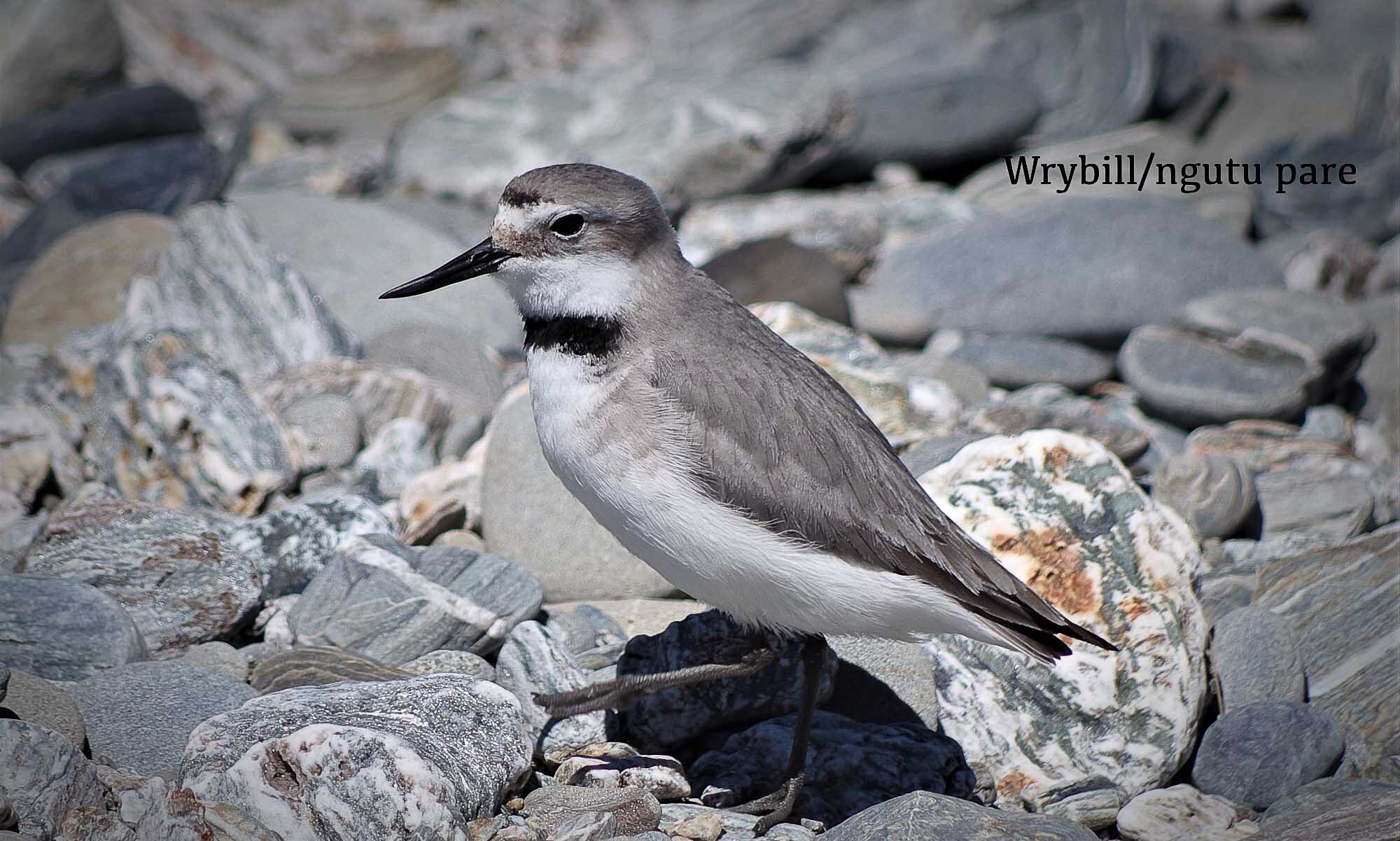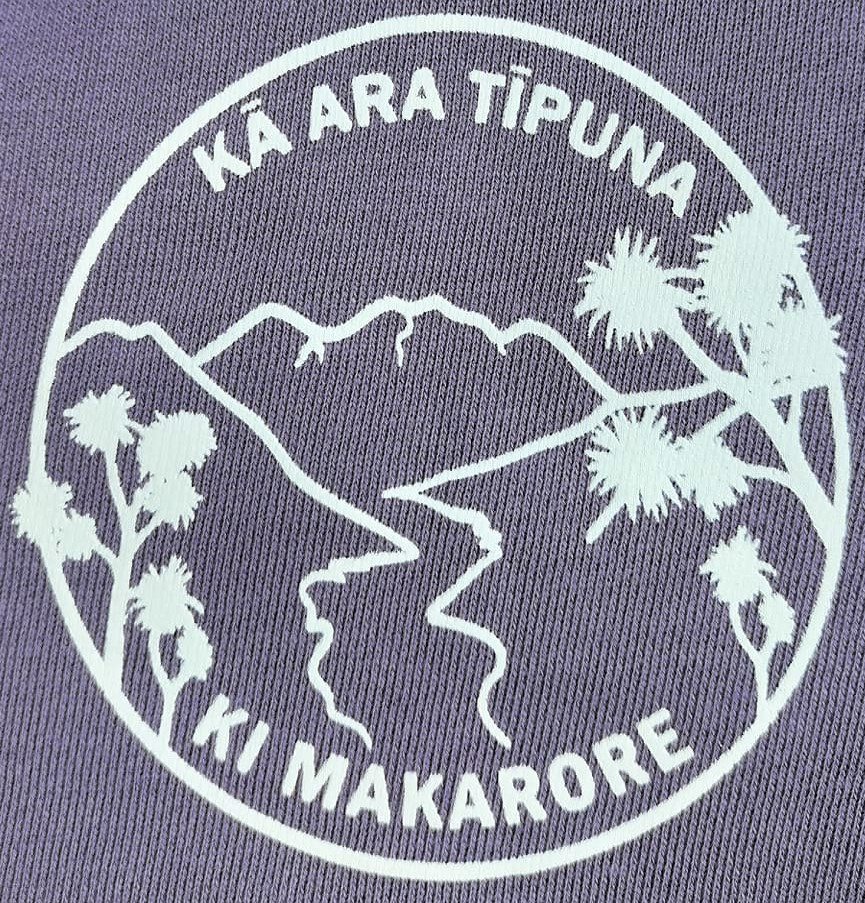A rewarding and enlightening joint Aspiring Biodiversity Trust and Kāi Tahu Event was held at Makarore during December 2021, sponsored by Toitū Te Whenua Land Information New Zealand. The wonderful Kāi Tahu students and professionals joined Aspiring Biodiversity Trust at Makarora Wonderland Lodge for an exciting 3-day residential field course, aligned with Māori heritage world view, te reo Māori, endemic biodiversity and habitat restoration.
The event kicked off with an overview of ABT’s Ridge to River threatened species programmes with an introduction to forest bird calls, geophysiography and retracing the historic wetland vegetation of the locality. Out in the forest the amazing Puke Timoti talked of how his ancestors traditionally read the forest in terms of mahinga kai resources with particular reference to the kererū, forest regeneration, medicinal plants and bush skills.


Paulette Tamati-Elliffe and Tumai Cassidy shared aspects of the important Ngāi Tahu Cultural Mapping Project with specific reference to the Makarore and Otanenui Rivers and their historical place names where former ancestors once settled.
Rangi Mātāmua the legendary Māori astronomer, talked about Matariki (the Māori New Year) and his aspiration for the national holiday going forward, encouraging everyone to contribute to conservation activities rather than material gifts at this special time.
Everyone was looking forward to seeing more of Makarore’s true splender and the weather didn’t disapoint.

A jet boat field trip with Wilkin River Jets along the Otanenui (Wikin) to Kerin Forks helped facilitate a reconnection to lost ancestral roots for many of the participants. This is one location of former Māori settlement’s along with the head of the Makarore delta and the head of Lake Hawea where mahinga kai (natural resource) was plentiful. Harvested species that are now no longer present included kiwi, weka and kakapo with plentiful tuna (eel). This was back (pre-fire) when the Makarore valley (1860) had been described as: an entangled, impenetrable mess of cabbage trees, flax and fern, growing to a height of 8 feet to 10 feet and the ground a jungle of dried and decayed vegetation.
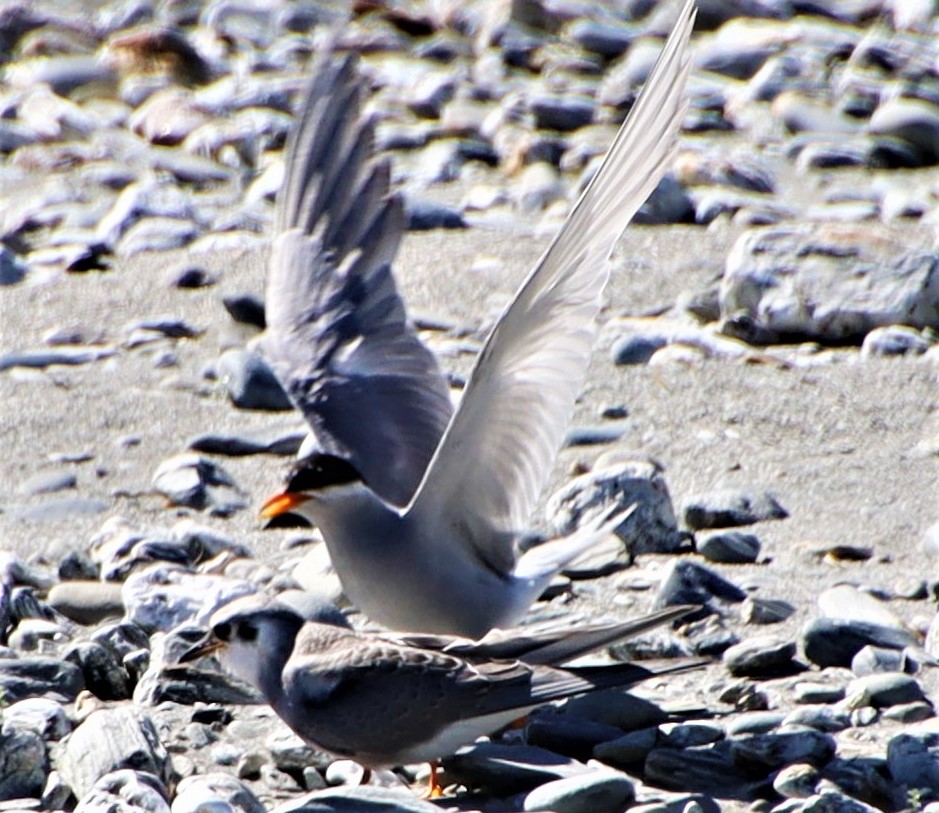
Good viewing of breeding endemic braided river birds followed with adult tarapirohe (black-fronted tern’s) busy feeding their chicks (above image) along with dispersing tarāpuka (black-billed gull) and tūturiwhatu (banded dotterel) fledglings.

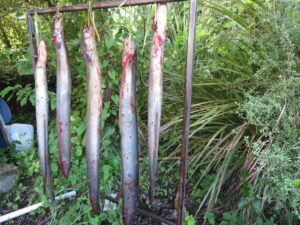
To everyone’s delight we found that longfin tuna are still, definitely present in Makarore following the setting of an eel net at dusk, left out overnight. The following morning found over 60 good sized, healthy tuna! In fact, it’s possible that anymore would not have fitted into the net! What a delight! Most were released back where they were found, with a sample taken for traditional preparation which was later sampled from the BBQ on the last evening. What a treat!
Discussion on the sad reality of constraints to the breeding ecology of tuna (not being able to naturally reach the sea) within the Southern Lakes region was had and how – one day this will hopefully change for this important and iconic taonga. Rangi Mātāmua is keen to return to Makarore to monitor the eel population more closely and look at the current population age structure.
A final site visit towards the source of the Makarore River (which rises on the eastern slopes of Mt Brewster) formally known as “Whare Manu” (House of the bird). Unfortunately, recent survey results with a protected species detector dog (2022) did not find any signs of whio (blue duck), last recorded in 1980’s. However kea, titipounamu (riffleman) and koekoeā (long-tailed cuckoo) were found to be present.
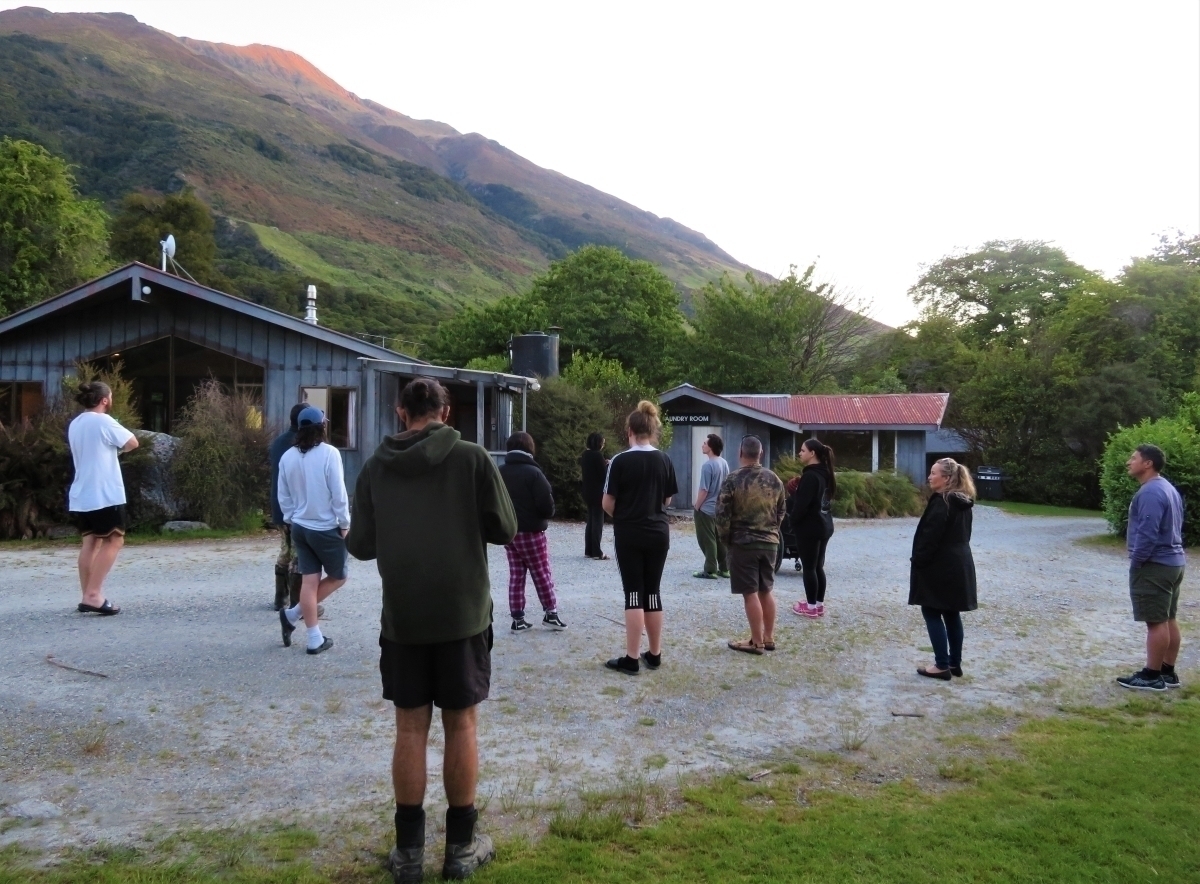
The event finished with a fun and interactive quiz led by ABT’s Jackson Green, including pertinent questions from the three days activities and learning. It did get a little competitive but there was a clear winner of the latest bird guide by young ornithologist, Oscar Thomas. Around the same time kaka were about feeding on cherry’s just above the building. A beautiful and emotional Waiata closed the evening!
It was such an *honour to host Kāi Tahu participants, their presence in Makarore was amazing and really completed the picture for us (on a spiritual level) and in terms of integration of cultural heritage and biodiversity within conservation and the essential importance of embracing Mātauranga Māori. We look forward to building on this collaboration going forward.
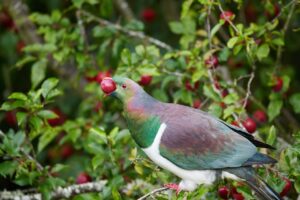
Acknowledgements
With thanks to: Kāi Tahu especially Paulette Tamati-Elliffe, Komene Cassidy and special guests Puke Timote and Rangi Mātāmua, Wonderland Makarora Lodge, Wilkin River Jets and Toitū Te Whenua Land Information New Zealand for enabling this special event to take place in Makarore, particuarly under Covid 19 circumstances (all participants/ science staff double vaccinated).
